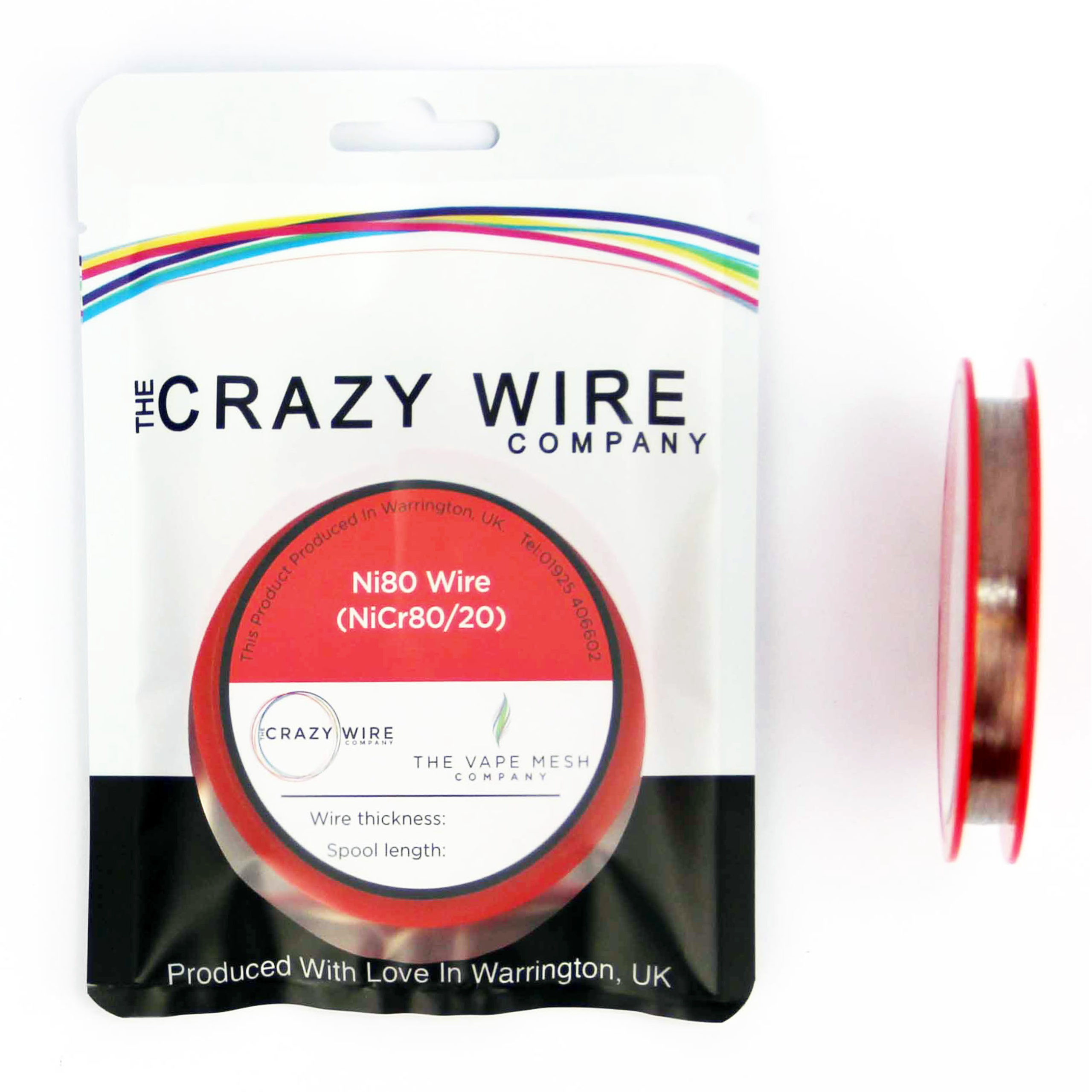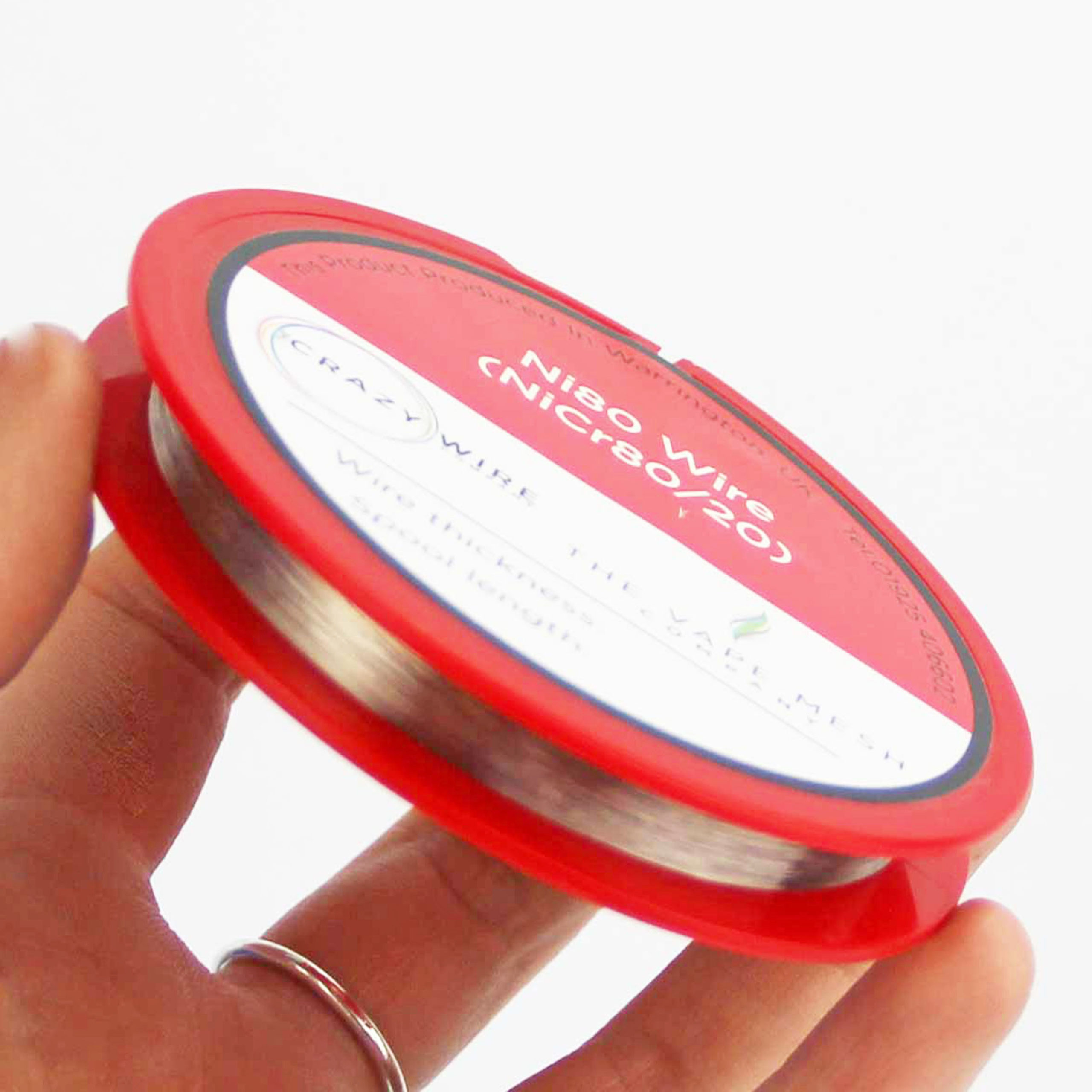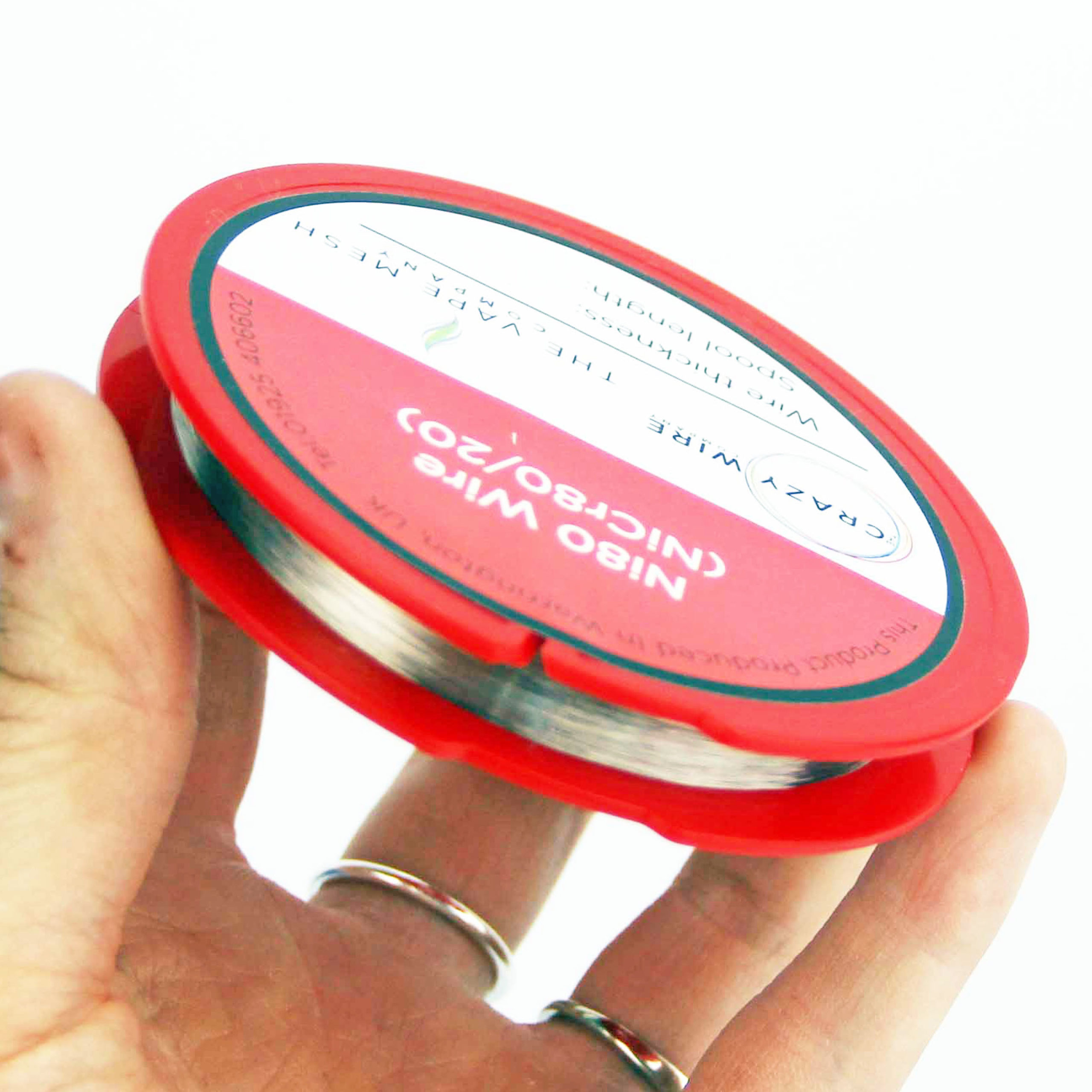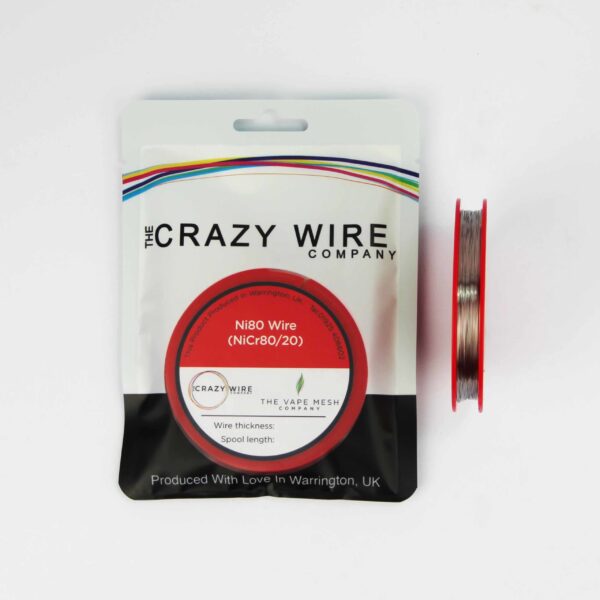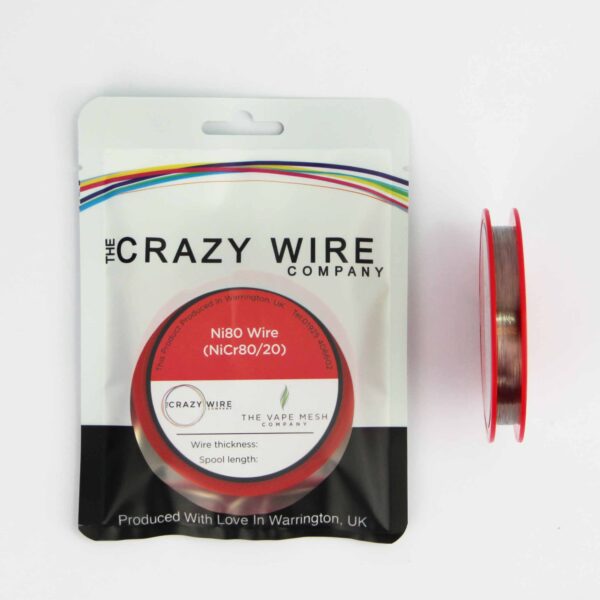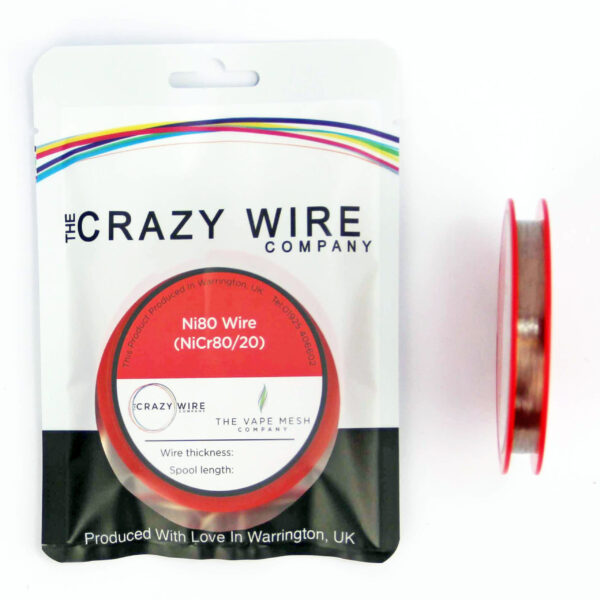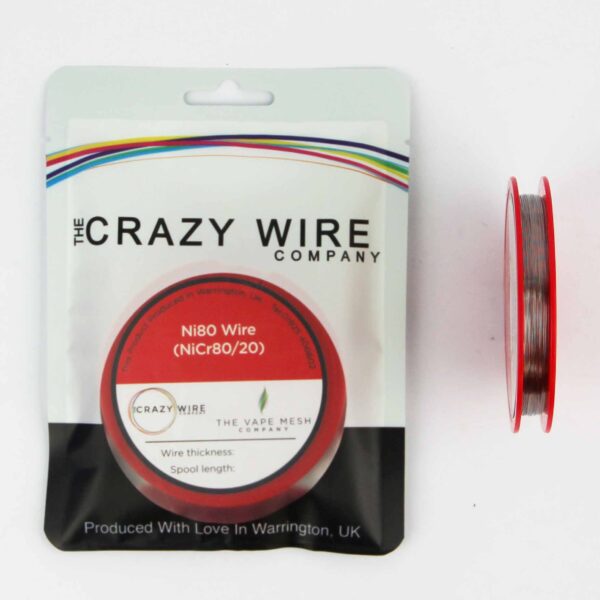Description
0.12mm Ni80 Resistance Heating Wire
The Crazy Wire Company are best know as suppliers of top quality Ni80 resistance heating wire. We have enormous stock levels at all times, as we use this wire to weave our high-specification woven mesh products. Our brilliant staff are experts in producing our spools of round wire on our 6 rapid action winding machines. All spools are produced to carry a little extra length to make up for any waste when handling the product.
The 0.12mm (36 AWG) Ni80 resistance heating wire is a high-quality, durable product designed for a range of applications. This wire is primarily composed of nickel (80%) and chromium (20%), ensuring outstanding resistance to oxidation and corrosion. The most important benefit of Ni80 as a resistance heating wire is its fast ramp-up time. This makes it extremely efficient in applications that require rapid heat generation. Its small diameter of 0.12mm also provides precision in designs when space is limited or intricate patterns are required.
Resistance heating wire is widely used in appliances such as toasters, ovens, and hairdryers. Various industrial heating elements, such as ceramic kilns and laboratory furnaces, use it. Controlled heating is essential for DIY projects as well. Whether you’re a pro or a hobbyist, it will give you consistent performance, durability, and high temperature resistance.
Key product details:
- Diameter – 0.12mm (120 Micron – 36 AWG)
- Ohms/m – 85.00
- Technical Specification:
- Ni – Rest
- Cr – 20.0 – 23.0
- Fe – <1.0
- Max Continuous Service Temp Of Element – 1200
- Micrographic Structure – Austenite
- Magnetic Properties – Nonmagnetic
- Electrical resistance is high
- Corrosion resistance is high
Why Use The Crazy Wire Company
- Quality of products: The Crazy Wire Company always offer high-quality products that meet industry standards and customer expectations.
- Selection: We offer a wide variety of wire products and sizes to meet the diverse needs of our customers. We have more than 600 products available through our site and counting.
- Price: We always offer the best value possible. Our wires are available as part of our major weaving processes, so it is bought at the best possible rate.
- Availability: Our products are kept in house and are ready to ship immediately.
- Customer service: Our experienced staff help our customers feel confident in their purchases and provide assistance when required.
What Else Is Available?
We do not only offer Ni80 round wire. We also have a huge range of KA1 and stainless steel round wire in immediate stock too.
Ribbon wire and flat wire are stocked for immediate dispatch too.
FAQs About This Wire
When Resistance Decreases What Happens To Current?
Ohm’s law states that the current flowing through a conductor between two points is directly proportional to the voltage across the two points, and inversely proportional to the resistance between them. So, if the resistance decreases, then the current flowing through the conductor increases. Mathematically, this can be expressed as:
I = V/R
where I is the current, V is the voltage, and R is the resistance. As the resistance decreases, the value of R in the equation becomes smaller, causing the current to increase.
It’s important to note that this relationship between resistance, voltage, and current only holds under constant conditions such as temperature and material properties. Changes in temperature or material properties can also affect resistance, which can in turn affect the current flowing through the conductor.
When Resistance Increases What Happens To Temperature?
When resistance increases in an electrical conductor, it can cause an increase in temperature due to the generation of heat. This is because as the current flows through the conductor, it encounters increased resistance, which results in the conversion of some of the electrical energy into thermal energy. This increase in thermal energy causes an increase in the temperature of the conductor.
The relationship between resistance and temperature is not necessarily straightforward, as other factors such as material properties, current, and voltage can also influence the temperature. For example, if the current and voltage are kept constant, a change in resistance will result in a proportional change in temperature. However, if the current and/or voltage changes, the relationship between resistance and temperature may become more complex.
It’s important to keep in mind that the generation of heat can have both desirable and undesirable consequences, depending on the application. For example, in the case of a heating element, the generation of heat is the desired outcome, while in the case of an electrical component, excessive heat generation can lead to damage and failure.
When Resistance Increases What Happens To Voltage?
Ohm’s law states that the current flowing through a conductor between two points is directly proportional to the voltage across the two points and inversely proportional to the resistance between them. If the resistance increases, the current flowing through the conductor decreases, which means that the voltage across the two points must increase in order to maintain the same current. Mathematically, this can be expressed as:
I = V/R
where I is the current, V is the voltage, and R is the resistance. As the resistance increases, the value of R in the equation becomes larger, causing the voltage to increase in order to maintain the same current.
It’s important to note that this relationship between resistance, voltage, and current only holds under constant conditions such as temperature and material properties. Changes in temperature or material properties can also affect resistance, which can in turn affect the voltage required to maintain a given current.
When Resistance Increases What Happens To Heat?
Check out our blog ‘what is nichrome‘ for more information on ni80 wire in general. Our goal for our blogs and help guides is to answer as many questions as possible to help to explain the possibilities of mesh to our customers.
We also offer similar products through our highly popular eBay store, check us out there too.
Contact our team today if you have any questions at all. We are always really keen to help in any way that we can.

